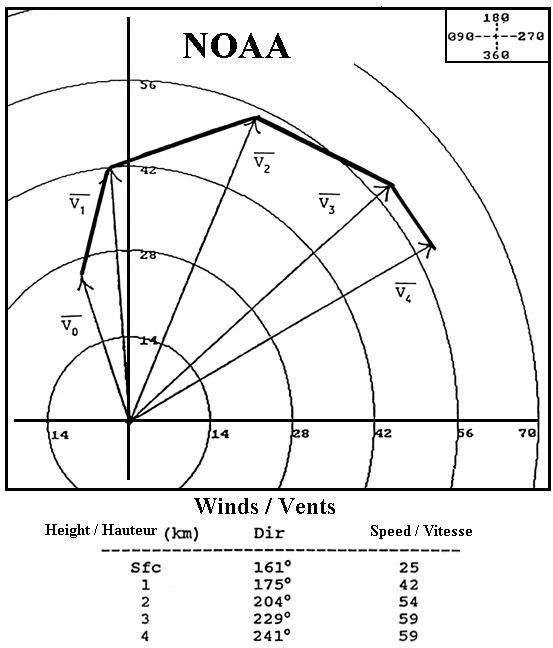 | ||
A hodograph is a diagram that gives a vectorial visual representation of the movement of a body or a fluid. It is the locus of one end of a variable vector, with the other end fixed. The position of any plotted data on such a diagram is proportional to the velocity of the moving particle. It is also called a velocity diagram. It appears to have been used by James Bradley, but its practical development is mainly from Sir William Rowan Hamilton, who published an account of it in the Proceedings of the Royal Irish Academy in 1846.
Contents
Applications
It is used in physics, astronomy and fluid mechanics to plot deformation of material, motion of planet or any other data that involves the velocities of different parts of a body.
See Swinging Atwood's machine
Meteorology
In meteorology, hodographs are used to plot winds from surrounding of the Earth's atmosphere. It is a polar diagram where wind direction is indicated by the angle from the center axis and its strength by the distance from the center. In the figure to the right, at the bottom one finds values of wind at 4 heights above ground. They are plotted by the vectors
With the hodograph and thermodynamic diagrams like the tephigram, meteorologists can calculate:
Hodograph transformation
Hodograph transformation is a technique used to transform nonlinear partial differential equations into linear version. It consists of interchanging the dependent and independent variables in the equation to achieve linearity.
